monthly
Type of resources
Available actions
Topics
Keywords
Contact for the resource
Provided by
Years
Formats
Representation types
Update frequencies
Service types
Scale
Resolution
-
The global radiation observation data contain hourly and daily radiation amounts, including those no longer being reported. The measurements of global solar irradiation amount, diffuse solar irradiation amount, direct irradiation amount, irradiation balance amount, and global horizontal illumination are recorded by observation stations worldwide and transmitted within SYNOP, HCM, AWSHRLY, MODLERAD, ESAWRADT and DRADR35 messages. The data span from 1947 to present.
-
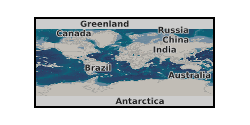
The database contains scanned photographs (at 1016dpi) of the UK and various locations around the world. Some are single band (black&white) others are 3 band colour. The images are stored in various formats on various types of magnetic media: .COT raw scans can only be used on the Intergraph ImageStation; .JPG (Intergraph format); .TIF. Processed scans may also be saved as stereomodels (with project data) and as orthophotographs. Mono coverage for most of the UK and we are constantly acquiring stereo data. Data is updated when unscanned areas are required by projects.
-
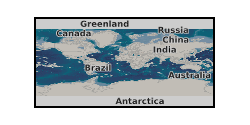
This dataset contains parametric data (epicentre, magnitude, depth, etc) for over one million earthquakes worldwide. The dataset has been compiled gradually over a period of thirty years from original third-party catalogues, and parameters have not been revised by BGS, although erroneous entries have been flagged where found. The dataset is kept in two versions: the complete "master" version, in which all entries for any single earthquake from contributing catalogue are preserved, and the "pruned" version, in which each earthquake is represented by a single entry, selected from the contributing sources according to a hierarchy of preferences. The pruned version, which is intended to be free from duplicate entries for the same event, provides a starting point for studies of seismicity and seismic hazard anywhere in the world.
-
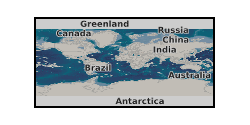
The British Geological Survey (BGS) in collaboration with the Environment Agency (EA) has developed a web-based tool that provides an indication of whether suitable conditions exist in a given area for Open-loop Ground Source Heat Pumps (GSHP). The tool is developed within a GIS and maps the potential for open-loop GSHP installations (heating/cooling output >100kW) in England and Wales at the 1:250,000 scale. Data layers from this tool are available to view in this service. The data in this service is available to access for free on the basis it is only used for your personal, teaching, and research purposes provided all are non-commercial in nature as described on http://www.bgs.ac.uk/about/copyright/non_commercial_use.html. Where commercial use is required, licences are available from the British Geological Survey (BGS). Your use of any information provided by the BGS is at your own risk. BGS gives no warranty, condition or representation as to the quality, accuracy or completeness of the information or its suitability for any use or purpose. All implied conditions relating to the quality or suitability of the information, and all liabilities arising from the supply of the information (including any liability arising in negligence) are excluded to the fullest extent permitted by law.
-
Data were collected by the Chilbolton Facility for Atmospheric and Radio Research (CFARR) Direct Visible Radiometer from 27th Februrary 2013 to the present at Chilbolton, Hampshire. The dataset contains measurements of high accuracy direct solar radiation measurement research on a plane/level surface.
-
The UK daily rainfall data describe the rainfall accumulation and precipitation amount over a 24 hour period. The data are collected by observation stations across the UK and transmitted within the following message types: WADRAIN, NCM, AWSDLY, DLY3208, SSER and WAMRAIN. The data spans from 1853 to present.
-
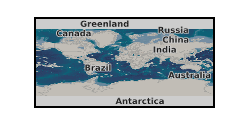
High Resolution, Airborne Magnetic, Radiometric, VLF Survey over north Midlands of GB. Survey flying for the collaborative BGS and World Geoscience Corporation Ltd (WGC) high resolution geophysical and environmental survey was completed in early September 1998. The data comprise multi-channel gamma ray spectrometer, magnetometer and dual frequency VLF-EM. Flight line spacing was 400 m with tie lines at 1200 m and the total area surveyed is some 14 000 km2. Flight-line orientations are W–E over the western survey area, SW–NE over the eastern area. Ground clearance was maintained at 90 m in rural areas, increasing to about 240 m in built-up zones.
-
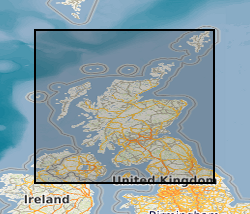
The Land Survey Archives consists of records of the Geological Survey in Scotland for permanent retention dating from 1860s onwards. The collection comprises geologists' field notebooks, miscellaneous field observations and reports, historical and biographical material, correspondence files, photographs, etc. Includes archival material deposited by outside individuals and organisations, eg. NCB (National Coal Board) Bore Book Collection. Survey archival material for Northern England will be incorporated. Some 380 accessions held amounting to over 7,000 items. Indexed at collection level in Land Survey Record Index (LSRI). Plans abstracted and held separately in Land Survey Plans Collection.
-
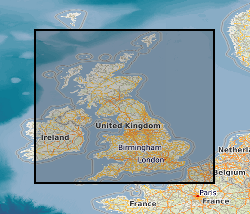
Database of water levels in selected observation boreholes: daily, weekly or monthly measurements. Consistent set of boreholes in catchments relatively undisturbed by pumping distributed across most significant aquifer units in the UK. Most sites have more than 30 years of data, and some sites have considerably longer time series. The dataset represents only 5% of active groundwater monitoring networks run by UK measuring agencies. BGS holds other, historical, groundwater level data, including one off measurements and time series.
-
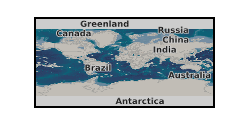
The joint PHE-BGS digital Indicative Atlas of Radon in Great Britain presents an overview of the results of detailed mapping of radon potential, defined as the estimated percentage of homes in an area above the radon Action Level. The Indicative Atlas of Radon in Great Britain presents a simplified version of the Radon Potential Dataset for Great Britain with each 1-km grid square being classed according to the highest radon potential found within it, so is indicative rather than definitive. The joint PHE-BGS digital Radon Potential Dataset for Great Britain provides the current definitive map of radon Affected Areas in Great Britain.
 NERC Data Catalogue Service
NERC Data Catalogue Service